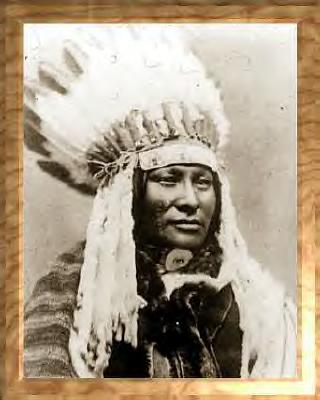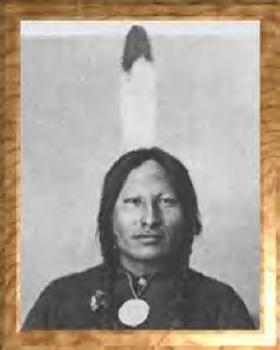|
|
Who Was Rain-in-the-Face
by Vicki from various sources
 Rain in the
Face was one of the most feared and respected Native American warriors of the late 19th century. Rain in the
Face was one of the most feared and respected Native American warriors of the late 19th century.A Hunkpapa Lakota, he was born in about 1835. In a narrative attributed to him, he says: "I was born near the forks of the Cheyenne river. I had some noted ancestors, but they left me no chieftainship. I had to work for my reputation." His name is thought to have come from an incident when, as a young brave, he was fighting with another boy. The fight was fierce and his face became spattered with blood – so badly, it looked like rain on his face, or itonagaju. He has often been linked to the death of General George Custer, the United States Cavalry hero, at his defeat at the Battle of Little Bighorn in Montana in 1876. There is much argument about who actually killed Custer, known to the Lakota as the Long-Haired Chief. The general's wife believed that Rain in the Face dealt the death blow and the American poet Longfellow wrote about his deeds in "The Revenge of Rain in the Face" (see below).. Rain in the Face would only say: "Some say I killed the Chief, and others that I cut out the heart of his brother [Tom Custer], because he had caused me to be imprisoned. In that fight the excitement was so great that we scarcely recognised our near neighbours. Everything was done like lightning." He also said that another brave, Appearing Elk, might have had a claim to the kill. "He had some of the weapons of the Long-Haired Chief and the Indians used to say jokingly after we came upon the reservation that Appearing Elk must have killed the Chief because he had his sword. However, the scramble for plunder did not begin until all were dead." Rain in the Face died at his home on the Standing Rock Reserve in North Dakota on 14 September 1905. |
|
THE REVENGE OF RAIN-IN-THE-FACE In that desolate land and lone, |
|
|
|
| Canku Ota is a free Newsletter celebrating Native America, its traditions and accomplishments . We do not provide subscriber or visitor names to anyone. Some articles presented in Canku Ota may contain copyright material. We have received appropriate permissions for republishing any articles. Material appearing here is distributed without profit or monetary gain to those who have expressed an interest. This is in accordance with Title 17 U.S.C. section 107. |
|
Canku Ota is a copyright of Vicki Lockard and Paul Barry. |
|

